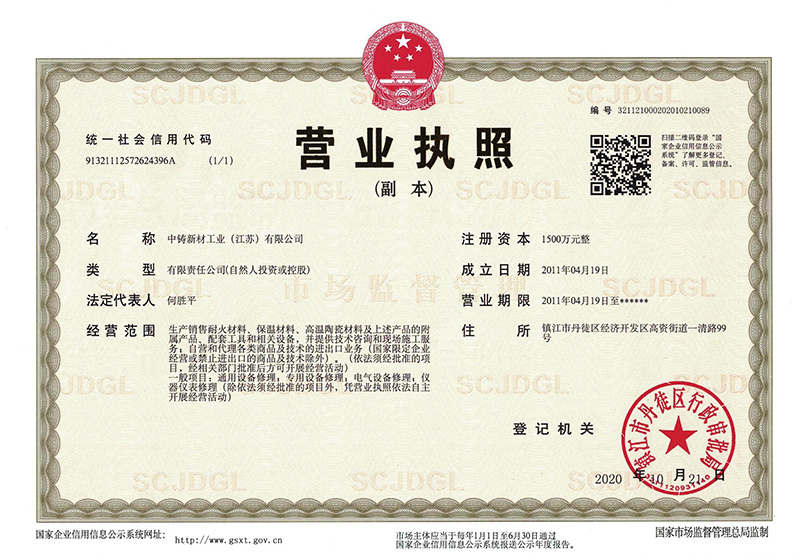News
SINO-FOUNDRY—professional refractory manufacturer
Castable in Aluminum: Bridging Traditional Methods with Modern Techniques for Superior Performance
2025-07-19
Castable in Aluminum: Bridging Traditional Methods with Modern Techniques Table of Contents 1. Overview of Aluminum Casting 2. Importance of Aluminum in Modern Industries 3. Traditional Methods of Aluminum Casting 4. Modern Techniques in Aluminum Casting 5. Comparison of Traditional and Modern Techniques 6. Applications of Castable Aluminum 7. Challenges in Aluminum Ca
Castable in Aluminum: Bridging Traditional Methods with Modern Techniques
Table of Contents
- 1. Overview of Aluminum Casting
- 2. Importance of Aluminum in Modern Industries
- 3. Traditional Methods of Aluminum Casting
- 4. Modern Techniques in Aluminum Casting
- 5. Comparison of Traditional and Modern Techniques
- 6. Applications of Castable Aluminum
- 7. Challenges in Aluminum Casting
- 8. Future Trends in Aluminum Casting Technologies
- 9. Frequently Asked Questions (FAQs)
- 10. Conclusion
1. Overview of Aluminum Casting
Aluminum casting is a process that involves pouring molten aluminum into a mold to create specific shapes and components. The lightweight nature of aluminum, combined with its excellent corrosion resistance and thermal conductivity, makes it a preferred material across various industries. Understanding the casting process and its evolution from traditional methods to modern techniques is essential for achieving high-quality results.
2. Importance of Aluminum in Modern Industries
Aluminum is increasingly becoming the material of choice in modern manufacturing due to its unique properties. It is essential in industries such as automotive, aerospace, construction, and electronics. The ability to produce lightweight yet strong components through efficient casting processes drives its popularity. Additionally, aluminum's recyclability makes it an environmentally friendly option, appealing to industries focused on sustainability.
2.1 Benefits of Using Aluminum in Manufacturing
- **Lightweight**: Reduces energy consumption in transportation and improves efficiency in machinery.
- **Corrosion Resistance**: Extends the lifespan of components exposed to harsh environments.
- **Versatility**: Can be easily alloyed with other metals to enhance specific properties.
- **Thermal Conductivity**: Ideal for applications requiring efficient heat dissipation.
3. Traditional Methods of Aluminum Casting
Traditionally, aluminum casting techniques included sand casting, die casting, and investment casting. Each method has its own set of advantages and limitations, which we will explore in detail.
3.1 Sand Casting
Sand casting is one of the oldest and most commonly used methods. It involves creating a mold from sand, which is then filled with molten aluminum. This method is cost-effective and suitable for producing large parts with complex geometries.
3.2 Die Casting
In die casting, molten aluminum is injected into a metal mold under high pressure. This technique allows for high precision and excellent surface finish, making it ideal for mass production of small to medium-sized components.
3.3 Investment Casting
Investment casting, also known as lost-wax casting, produces intricate shapes with high dimensional accuracy. It involves creating a wax pattern coated with a ceramic shell, which is then melted away to leave a cavity for the molten aluminum.
4. Modern Techniques in Aluminum Casting
With advancements in technology, modern aluminum casting techniques have emerged to improve efficiency, reduce waste, and enhance product quality.
4.1 3D Printing for Aluminum Casting
3D printing, or additive manufacturing, has revolutionized the way molds and patterns are created. This technique allows for rapid prototyping and the production of complex geometries that were previously unattainable with traditional methods.
4.2 Advanced Alloys and Materials
The development of new aluminum alloys has expanded the performance capabilities of cast components. Modern casting processes utilize these advanced materials to meet specific industry requirements, such as increased strength and enhanced thermal resistance.
4.3 Automation in the Casting Process
Automation plays a crucial role in improving efficiency and consistency in aluminum casting. Robotic systems and advanced monitoring technologies streamline the casting process, minimizing human error and maximizing productivity.
5. Comparison of Traditional and Modern Techniques
Both traditional and modern aluminum casting techniques have their own strengths and weaknesses. Understanding these differences can help manufacturers choose the right method for their specific needs.
5.1 Cost Considerations
Traditional methods are generally more cost-effective for low-volume production, while modern techniques may incur higher initial costs but offer significant savings in the long run for high-volume applications.
5.2 Precision and Quality
Modern techniques often provide superior precision and surface finish compared to traditional methods. The ability to produce complex geometries with minimal waste adds to the overall quality of the final product.
5.3 Speed of Production
Modern casting methods, particularly those incorporating automation and 3D printing, can significantly reduce production times compared to traditional approaches.
6. Applications of Castable Aluminum
Castable aluminum is utilized in a wide range of applications across various industries.
6.1 Automotive Industry
In the automotive sector, aluminum castings are essential for manufacturing lightweight components, such as engine blocks, transmission housings, and wheels, contributing to improved fuel efficiency.
6.2 Aerospace Industry
Aerospace applications require high-strength, lightweight materials. Aluminum castings are used for structural components, which must withstand extreme conditions while maintaining performance.
6.3 Electronics and Electrical Equipment
Aluminum's excellent thermal conductivity makes it valuable in the electronics industry for heat sinks and housings that protect sensitive components from overheating.
7. Challenges in Aluminum Casting
Despite its advantages, aluminum casting presents several challenges that manufacturers must address.
7.1 Porosity Issues
Porosity can compromise the integrity of cast components, leading to reduced strength and performance. Careful control of the casting process and the use of advanced techniques can mitigate this issue.
7.2 Dimensional Accuracy
Achieving precise dimensions is crucial in many applications. Variability in the casting process can lead to deviations from specifications, requiring additional machining or rework.
7.3 Environmental Considerations
The casting process can generate waste and emissions. Manufacturers must adopt sustainable practices, including recycling scrap aluminum and minimizing energy consumption.
8. Future Trends in Aluminum Casting Technologies
The future of aluminum casting appears promising, with several trends shaping its evolution.
8.1 Integration of Smart Technologies
The incorporation of IoT (Internet of Things) and AI (Artificial Intelligence) in casting processes is expected to enhance monitoring and control, leading to improved efficiency and reduced waste.
8.2 Continued Development of Alloys
Research into new aluminum alloys with enhanced properties will likely continue, enabling manufacturers to meet the growing demands for performance in various applications.
8.3 Sustainability Initiatives
As industries strive to reduce their carbon footprint, sustainable casting practices will gain prominence. This includes increased recycling efforts and the development of eco-friendly casting materials.
9. Frequently Asked Questions (FAQs)
9.1 What is the primary advantage of aluminum casting?
The primary advantage of aluminum casting lies in its ability to produce lightweight, strong components that are resistant to corrosion, making it ideal for various industrial applications.
9.2 How does 3D printing improve aluminum casting?
3D printing enhances aluminum casting by allowing for rapid prototyping and the creation of complex geometries, which traditional methods may struggle to achieve.
9.3 What are the common challenges faced in aluminum casting?
Common challenges include porosity, dimensional accuracy, and environmental considerations related to waste and emissions during the casting process.
9.4 How do modern alloys enhance aluminum casting quality?
Modern alloys are engineered to offer improved strength, thermal resistance, and corrosion resistance, allowing for better performance in demanding applications.
9.5 What industries primarily utilize castable aluminum?
Castable aluminum is primarily utilized in the automotive, aerospace, construction, and electronics industries, where lightweight and durable components are crucial.
10. Conclusion
In conclusion, the world of aluminum casting is a dynamic landscape that balances traditional methods with cutting-edge modern techniques. As industries continue to evolve and demand higher performance from their materials, the advancements in aluminum casting will play a vital role in meeting these challenges. By understanding the intricacies of the casting process, manufacturers can harness the full potential of castable aluminum, ensuring superior quality and efficiency in their production processes. Embracing both tradition and innovation is key to staying competitive in this ever-changing market.
Related News
2024-11-05
Zhongzhu New Materials Industry sincerely invites you to participate in the 24th International Forum and Exhibition on Recycled Metals.

WeChat public account

View mobile website
Address : No. 99, Yiqing Road, Gaozi Street, EconomicDevelopment Zone, Dantu District, Zhenjiang City
Fax : +86-511-85683066
E-mail : sales@sfr168.com
Website : https://www.sfr168.com
Copyright©2023 Sino-Foundry Refractory(Jiangsu) Co.,Ltd. Powered by:www.300.cn
Copyright©2023 Sino-Foundry Refractory(Jiangsu) Co.,Ltd.
IPV6 | SEO | Cloud Information



